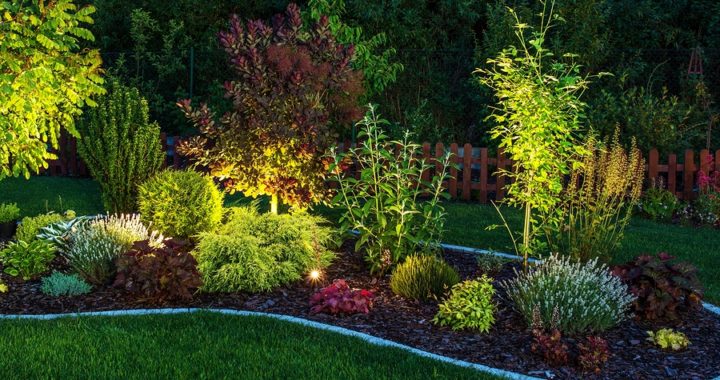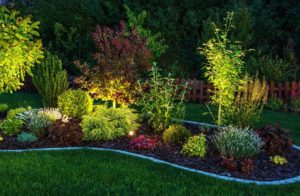Landscape lighting is the icing on the cake. Nightscapes add the wow factor that transforms an otherwise mundane yard into a spectacular vision.
There are several lighting techniques that you can use to create creative pockets of illumination and shadow. Designs are only limited by your imagination, so it’s fine to go wild. There’s no limit to the possibilities.
Landscape Lighting Methods
Accent Lighting
The accent, or spotlight, technique showcases features of interest with a focused beam of light. Use a fixture to highlight a focal point in your yard, such as a statute, flag, or fountain.
Silhouetting
Silhouetting is the perfect way to focus attention on trees, plants, and other dense landscaping materials. When placing the light source behind the feature and pointing it toward an adjacent wall, you’ll form an illuminated backdrop with a dark outline of the subject.
Shadowing
Comparable to silhouetting, the shadowing technique also creates dramatic interest by the use of illumination to a background wall or fence. In this case, the fixture is placed at the base of the subject and aimed through it to cast a shadow onto the wall. Imagine the dramatic appearance of a leafless tree swaying in a breeze.
Moon Lighting
The moon lighting effect is created by placing a large fixture in a tree and angling it downward. The light resembles the moon shining through the branches and causes the leaves to cast dark and moody shadow patterns below the tree.
Uplighting
Uplighting focuses attention on trees and other architectural designs. Place one to two fixtures at the base of the tree to highlight its structure or position the light sources eight feet away to illuminate the tree’s canopy.
Downlighting
Downlighting is created in a variety of ways. Light fixtures can be placed under eaves, high in trees, inside a trellis, or on a garden wall. This technique is commonly used to broadcast beams of light downward over a wide area or to brighten a garden or pathway.
Path and Step Lighting
Path and step lighting plans are designed for aesthetic appeal and safety. Many times,path lighting is created by placing small fixtures along walkways, driveways, pool areas, and patios for added visibility and security. Step lighting can be recessed into step risers, placed on vertical posts, or located under railings. Lighting should always be included at the bottom of the steps to eliminate shadows.
But that’s not all.
The list of landscape lighting techniques goes on and on. Light is also used to bring attention to the natural beauty of ponds and water gardens, as well as to illuminate the dramatic effects of pools and fountains.
When it comes to a nightscaping plan, there’s just no end to the variety of effects that you can create. Contact us today for a free consultation. 651.755.7901

